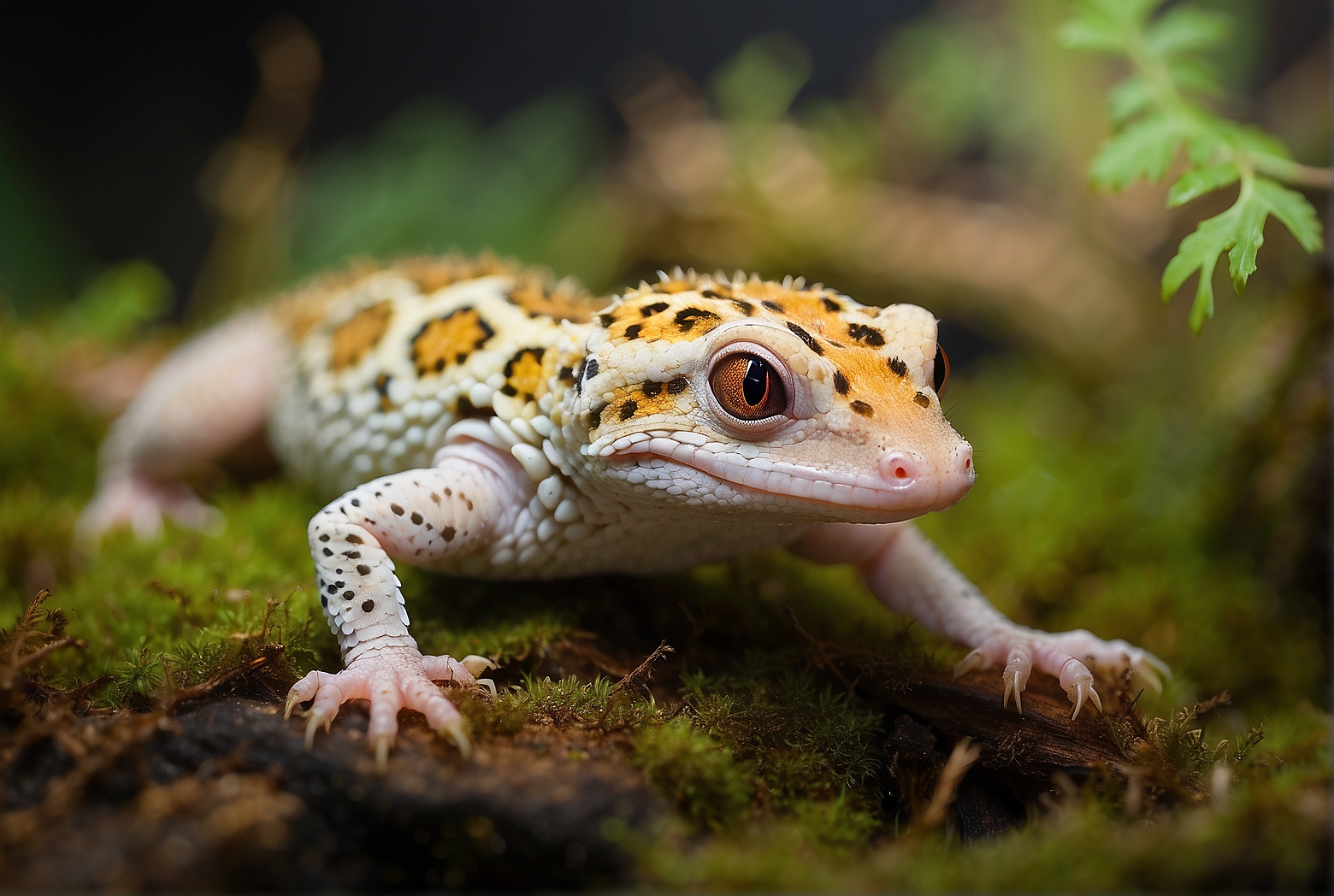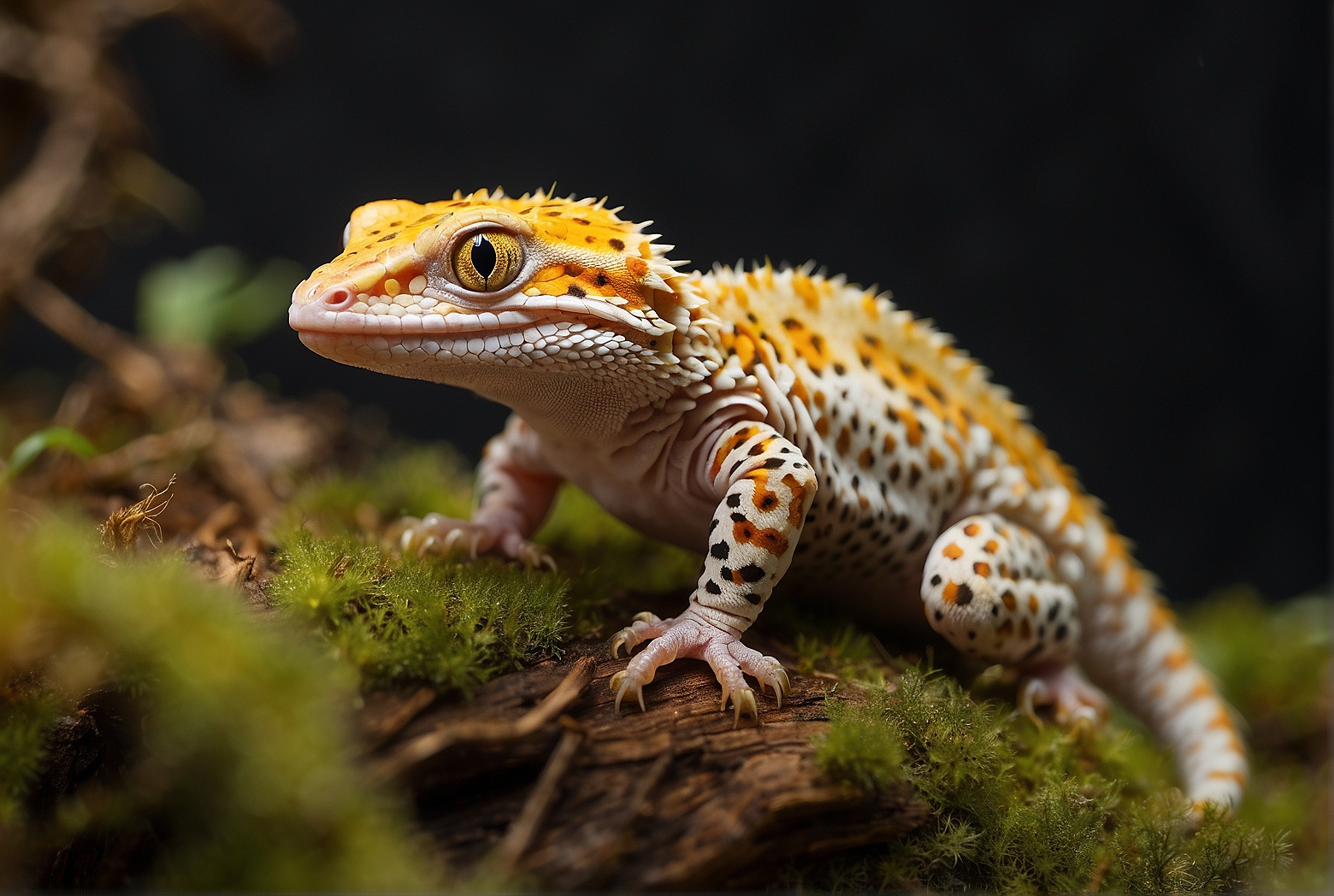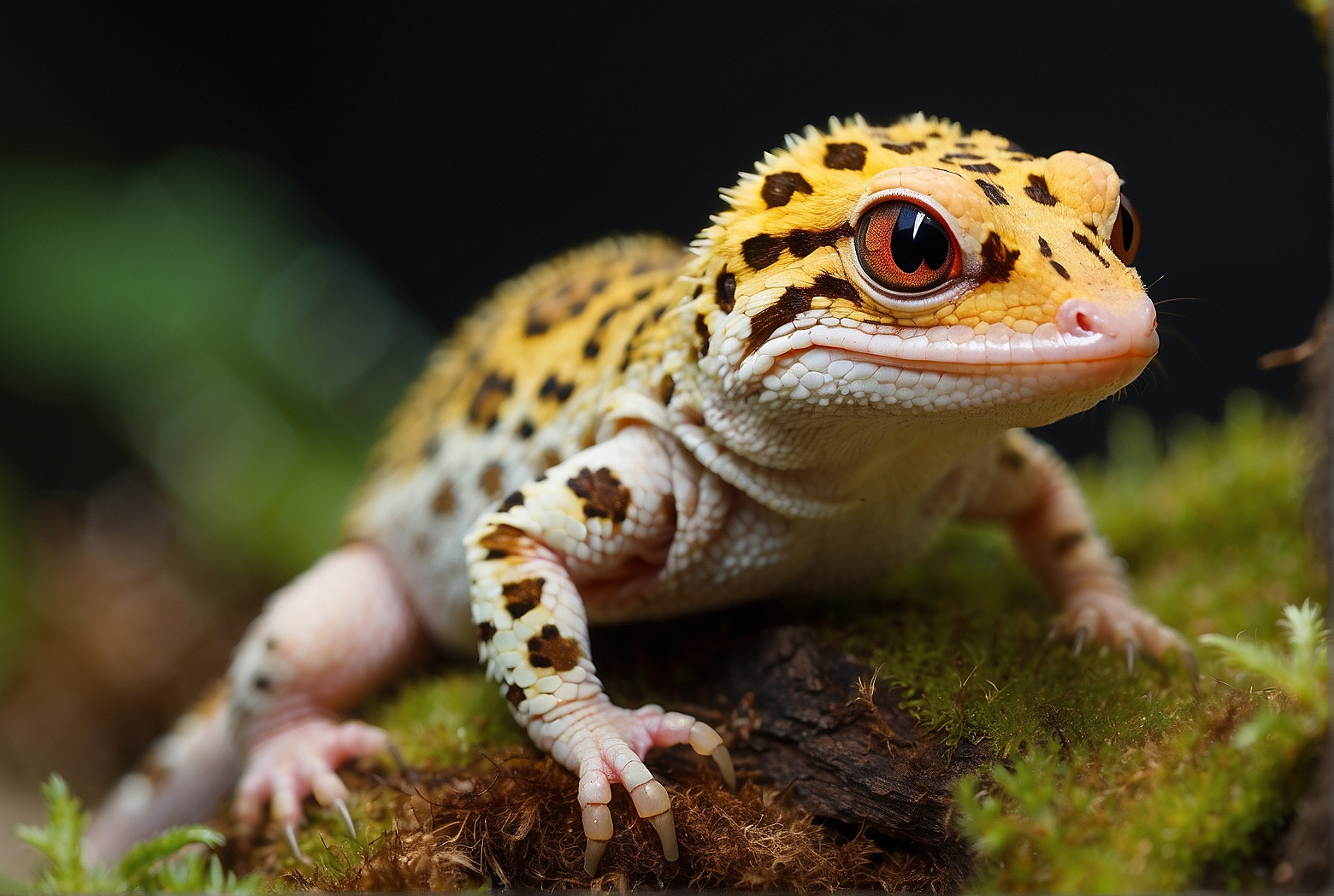Are you ready to discover a truly unique and fascinating creature? Allow me to introduce you to the Sphagnum moss Leopard Gecko. This enchanting reptile is unlike any other, with its distinctive markings and exceptional adaptability. Known for its affinity for sphagnum moss and its leopard-like spots, the Sphagnum Moss Leopard Gecko is a captivating sight to behold. In this article, we will delve into the world of this extraordinary gecko, exploring its habitat, behavior, and why it has become a popular choice among reptile enthusiasts. Prepare to be amazed by the wonders of the Sphagnum Moss Leopard Gecko!
Overview of Sphagnum Moss Leopard Gecko
The Sphagnum Moss Leopard Gecko, scientifically known as Eublepharis macularius, is a small reptile that is native to rocky deserts and arid regions of Afghanistan, Pakistan, and India. This unique species of gecko is named after its striking resemblance to the vibrant green color of sphagnum moss. These geckos have become increasingly popular as pets due to their unique appearance, relatively low maintenance requirements, and friendly temperament.
What is a Sphagnum Moss Leopard Gecko?
The Sphagnum Moss Leopard Gecko is a small-sized lizard belonging to the Eublepharidae family. They are known for their distinctive green and brown patterned skin, which camouflages them perfectly in their natural habitat. Unlike other gecko species, the Sphagnum Moss Leopard Gecko lacks adhesive toe pads, making them unable to climb vertical surfaces like glass.
Appearance
One of the most striking features of the Sphagnum Moss Leopard Gecko is its vibrant green and brown patterned skin, which resembles patches of sphagnum moss. These geckos typically have a stout body with a short snout and large, lidless eyes. They possess a prehensile tail, which aids in their balance and helps them navigate their environment. Adult Sphagnum Moss Leopard Geckos usually measure around 8 inches in length, with males being slightly larger than females.
Natural Habitat
In the wild, Sphagnum Moss Leopard Geckos are primarily found in the rocky deserts and arid regions of Afghanistan, Pakistan, and India. They naturally dwell among rocks, crevices, and burrows, seeking shelter during the scorching daytime heat and emerging at night when the temperature drops. These geckos have adapted to arid environments and are well-suited to low moisture levels. It is crucial to replicate their natural habitat when setting up their enclosure to ensure their well-being and happiness.
Housing and Tank Setup
Providing a suitable habitat is essential for the overall health and well-being of your Sphagnum Moss Leopard Gecko. Creating a comfortable and enriching environment will not only keep them happy but also encourage natural behavior and exploration.

Tank Size
When it comes to tank size, it is recommended to provide a spacious enclosure for your Sphagnum Moss Leopard Gecko. A 20-gallon tank is the minimum size for a single gecko, but if you have multiple individuals, it is advisable to invest in a larger tank to ensure they have ample space to move around and explore. Creating a more spacious environment will also promote exercise and physical activity, contributing to the gecko’s overall health.
Substrate
Choosing the right substrate for your Sphagnum Moss Leopard Gecko is crucial to mimic its natural habitat and maintain proper hygiene. Sphagnum moss, as the name suggests, is an excellent substrate choice for these geckos. Not only does it replicate their natural environment, but it also retains moisture to provide the required humidity levels. Avoid using substrates that may pose a risk of impaction, such as loose sand or gravel.
Temperature and Humidity
Sphagnum Moss Leopard Geckos thrive in temperatures between 80-90°F during the day, with a slight drop to 70-75°F at night. Providing a temperature gradient within the enclosure is essential, allowing the gecko to choose its preferred temperature. You can achieve this by using a heat mat or an under-tank heating pad on one side of the tank. Make sure to measure the temperature using a reliable thermometer to ensure accuracy.
As for humidity, Sphagnum Moss Leopard Geckos prefer relatively low humidity levels, around 30-40%. Maintaining proper humidity can be achieved by misting the enclosure occasionally or providing a moist hideout area with sphagnum moss.
Feeding and Diet
Proper nutrition is paramount to keeping your Sphagnum Moss Leopard Gecko healthy and thriving. These geckos are insectivores, meaning their diet should consist mainly of insects. Providing a varied and balanced diet will ensure they receive the necessary nutrients to thrive.
Dietary Requirements
Sphagnum Moss Leopard Geckos should be fed a diet primarily composed of nutritious live insects such as crickets, mealworms, and dubia roaches. Feeder insects should be appropriately sized and not larger than the space between the gecko’s eyes to prevent choking hazards. It is essential to gut load the insects with nutritious foods before feeding them to your gecko to maximize their nutritional value.

Feeding Schedule
Adult Sphagnum Moss Leopard Geckos should be fed every other day, while juveniles may require daily feedings due to their rapid growth. Feeding should take place during the evening or nighttime, as these geckos are nocturnal hunters in the wild. Providing an appropriate amount of food based on your gecko’s size and age will ensure proper growth and development.
Supplements
To ensure your Sphagnum Moss Leopard Gecko receives all the necessary vitamins and minerals, it is essential to provide calcium and vitamin D3 supplements. Dusting the feeder insects with a reptile-specific calcium powder ensures your gecko receives adequate calcium for bone health. Vitamin D3 supplementation is crucial for proper calcium absorption and can be provided through a powdered supplement or by offering UVB lighting.
Handling and Temperament
Proper handling techniques and understanding your Sphagnum Moss Leopard Gecko’s temperament are key to developing a bond and ensuring their comfort and safety.
Handling Tips
When handling your Sphagnum Moss Leopard Gecko, it is important to approach them slowly and calmly. Supporting their entire body with gentle hands will prevent any unnecessary stress or harm. It is advisable to handle them close to the ground or over a soft surface to minimize the risk of injury in case they wiggle out of your grasp.
Temperament
Sphagnum Moss Leopard Geckos are generally docile and have a friendly temperament, making them suitable pets for beginner reptile enthusiasts. With regular handling and gentle interaction, they can become comfortable with human presence and may even enjoy being hand-fed treats. However, it is important to remember that each gecko has its own unique personality, and some individuals may be more skittish or prone to stress than others.
Health and Common Issues
Monitoring the health of your Sphagnum Moss Leopard Gecko is crucial to ensure early detection of any potential issues. Understanding common health problems and providing appropriate care will help maintain their well-being.
Common Health Problems
One common health issue in Sphagnum Moss Leopard Geckos is metabolic bone disease, which can occur due to improper calcium intake or lack of UVB lighting. Signs of this disease can include weakness, tremors, and deformities in the limbs. Another common problem is shedding difficulties, which can be caused by low humidity levels or inadequate moisture.
Prevention and Care
To prevent metabolic bone disease, it is important to provide a balanced diet supplemented with calcium and offer UVB lighting or ensure the gecko has access to natural sunlight. Maintaining proper humidity levels and providing a moist hideout area can help alleviate shedding difficulties. Regular health check-ups with a reptile veterinarian are also recommended to detect any potential issues before they become serious problems.
Breeding and Reproduction
Breeding Sphagnum Moss Leopard Geckos can be a rewarding experience for experienced reptile enthusiasts. Understanding their reproductive behavior and providing proper care during the mating and incubation period is crucial for successful breeding.
Mating and Courtship
Mating in Sphagnum Moss Leopard Geckos usually occurs during the spring or summer months. Male geckos will display courtship behavior, including tail-waving, head-nodding, and biting the female’s neck or tail. It is important to ensure the female is in optimal health and size before breeding to prevent any complications during egg production.
Incubation and Hatching
After successful mating, the female gecko will lay a clutch of eggs, which should be carefully removed and incubated separately to ensure their survival. The eggs require a specific temperature and humidity for successful incubation. With proper care and monitoring, the eggs will hatch in approximately 45-60 days, with the emerging hatchlings being independent from birth.
Enclosure Decor and Enrichment
Creating a stimulating environment within the gecko’s enclosure is essential to promote natural behaviors and prevent boredom.
Decorative Elements
Incorporating decorative elements such as rocks, branches, and hiding spots in the tank will help mimic the gecko’s natural habitat. These elements provide opportunities for climbing, exploring, and hiding, promoting physical and mental stimulation.
Enrichment Accessories
To enhance your gecko’s well-being, you can add enrichment accessories such as puzzle toys, feeding stations, or even a small shallow dish for them to soak in. These accessories encourage foraging behavior, which helps stimulate the gecko’s natural instincts.
Grooming and Maintenance
Regular grooming and maintenance of your Sphagnum Moss Leopard Gecko’s enclosure is crucial to ensure their health and hygiene.
Cleaning the Tank
Cleaning the tank regularly is essential to maintain a clean and healthy environment for your gecko. Remove any uneaten food, shed skin, and feces promptly to prevent the growth of bacteria or odor. For general cleaning, use a reptile-safe disinfectant to sanitize the enclosure, making sure to rinse thoroughly to remove any residue.
Trimming Nails
As your gecko grows, their nails may require occasional trimming to prevent them from becoming too long or sharp. Using a small, specialized reptile nail trimmer or a regular nail clipper (taking extra caution) to carefully trim the tip of each nail will help prevent accidental scratches or injuries.
Frequently Asked Questions (FAQs)
What is the average lifespan of a Sphagnum Moss Leopard Gecko?
Sphagnum Moss Leopard Geckos have an average lifespan of 15 to 20 years when provided with proper care, nutrition, and a suitable habitat. With advancements in reptile husbandry and veterinary care, some geckos have been known to live beyond 25 years.
Can Sphagnum Moss Leopard Geckos be kept together?
While Sphagnum Moss Leopard Geckos can coexist peacefully, it is important to keep in mind that geckos are generally solitary animals in the wild. It is best to provide individual enclosures to avoid potential territorial conflicts, stress, or risk of transmitting diseases. Keeping them separately ensures each gecko has its own space to thrive and reduces the chances of breeding-related complications.
Are they suitable pets for beginners?
Sphagnum Moss Leopard Geckos are often considered suitable pets for beginner reptile enthusiasts due to their docile nature, relatively low maintenance requirements, and ease of handling. However, it is important for beginners to thoroughly research their care needs, provide the appropriate habitat, and commit to providing proper nutrition and regular veterinary care.
Conclusion
The Sphagnum Moss Leopard Gecko is a unique and fascinating reptile that can make a wonderful addition to your family. With their striking appearance, friendly temperament, and relatively low maintenance requirements, they are an appealing choice for reptile enthusiasts of all experience levels. By following the guidelines for housing, diet, handling, and health care outlined in this article, you can ensure a happy and healthy life for your Sphagnum Moss Leopard Gecko. Remember, providing a stimulating environment and attentive care will foster a strong bond between you and your gecko, resulting in years of joy and companionship.
